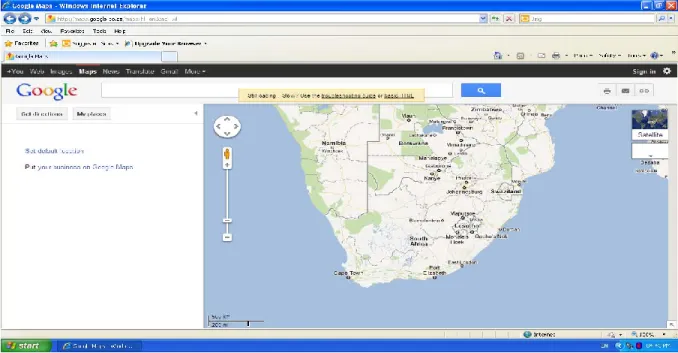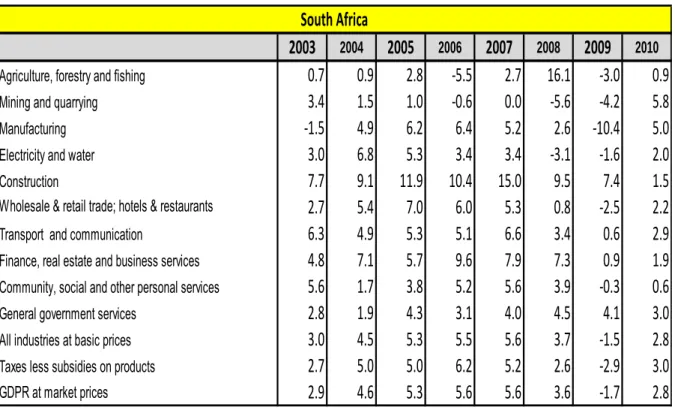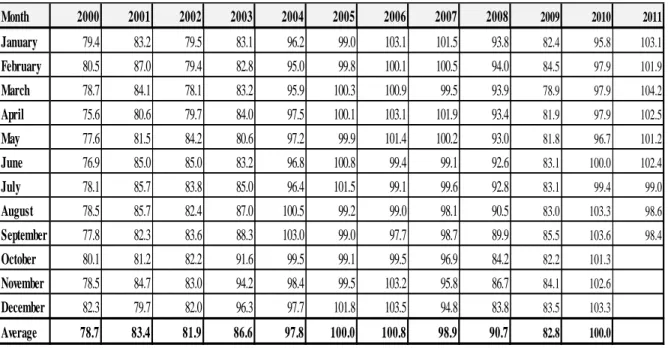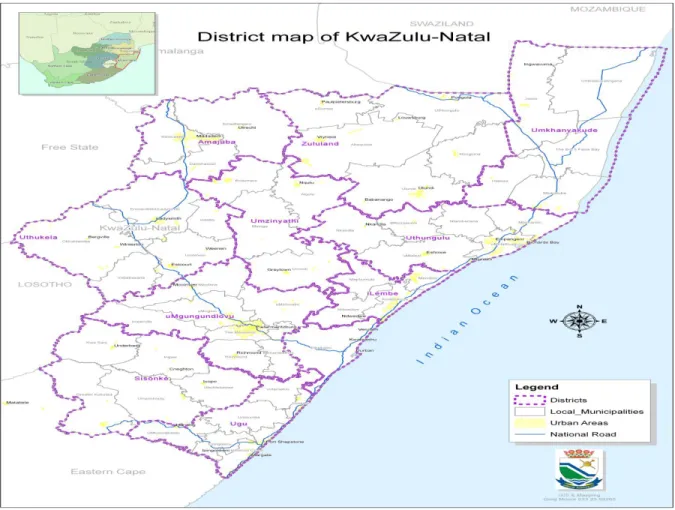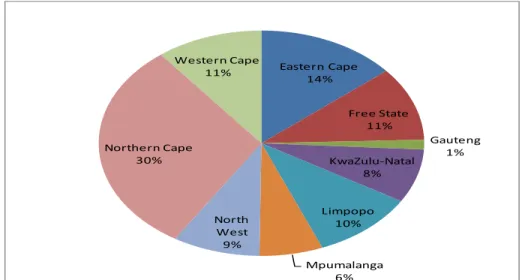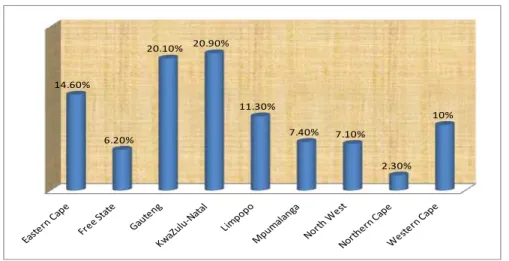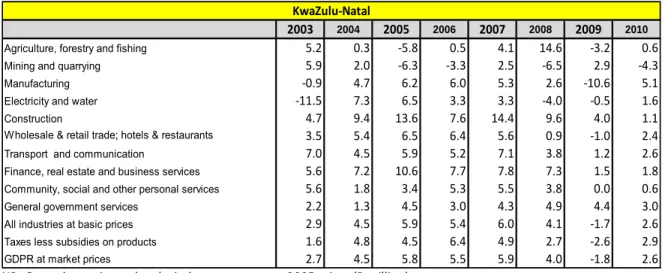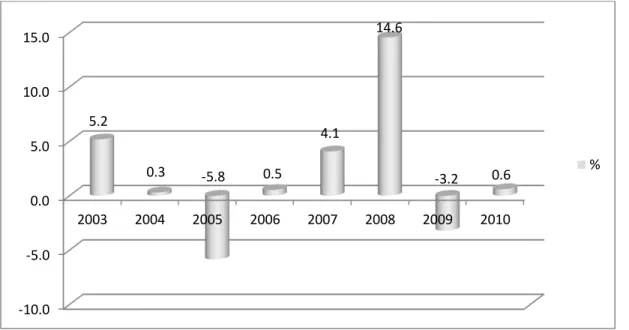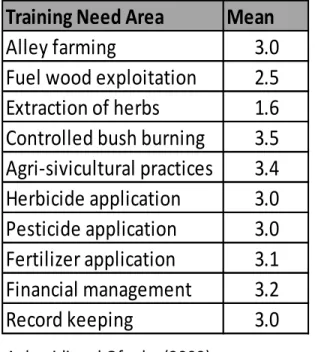This research focuses on case studies in KwaZulu-Natal of land reform projects that serve as contributors to local economic development (LED). The purpose of this study was to arrive at some guidelines and recommendations that will contribute to the success of land reform projects and thereby contribute to LED in KwaZulu-Natal province.
INTRODUCTION
- Introduction and Background
- Problem statement
- Research Questions
- Aim of the study
- The importance of the study
- Hypotheses
- Literature Review
- Research methodology
- Sampling
- Methods
- Analysis of data
- Limitation of the study
- Delimitations of the study
- Organisation of study
The total population of the study will consist of all land reform projects in KwaZulu-Natal since the implementation of the Land Act. The future prospects of the industry and the survival of land reform projects in a challenging trading environment are discussed.
SOUTH AFRICAN AGRICULTURE INDUSTRY
- A Background to the South African Economy
- KwaZulu-Natal Perspective
- Agricultural Economy
- Conclusion
The table below shows the frequency of importance of the project to the community. A table of objectives arising from the mission (immediate, medium and long term).
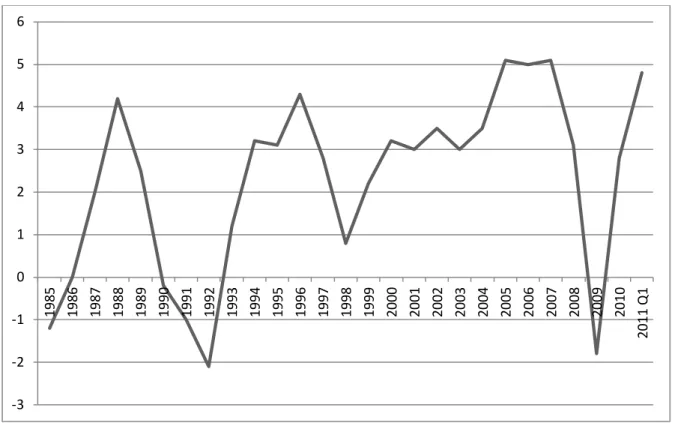
LAND REFORM PROJECTS REVIEW
Introduction
Unemployment and poverty in rural South Africa are major challenges and development opportunities for local municipalities and the national government is desperately needed to drive development in rural areas. The National Department of Rural Development and Land Reform launched the Comprehensive Rural Development Programme.
Background History
What makes matters worse in South Africa is that the people (i.e. the majority) were removed from the government (i.e. the minority) to create the then Pretoria-Witwatersrand-Vereening city and industrial development, for example, in the Province Gauteng (then Transvaal). Furthermore, current transfer rates suggest that targets cannot be met; less than 1% of the 1994 targets have been achieved.
Land Settlement Directorate Agenda
It is clear that since 1994, more laws have been passed to address the inequities and racial discrimination of the African majority in the acquisition and management of land in South Africa. CASP has been given a new priority to respond in a timely manner to the demands of the Land and Agrarian Reform Project (LARP).
Local Economic Development Significance
LARP is a joint project of the Department of Rural Development and Land Reform; the Department of Agriculture, Forestry and Fisheries; provincial departments of agriculture; state-owned agricultural enterprises; and sector partners. LED initiatives for restructuring rural economies variously involve strengthening agricultural bases, diversifying rural communities by attracting new production activities, making rural areas attractive spaces for tourism consumption, or lobbying for public sector spending by geographically marginal communities (Neil) an Tykkylainen, 1998).
Local Economic Development in South Africa
Nel (1999) states: “It is important to note that in rural areas of South Africa, external support and advice are needed to address the lack of capacity at local levels to implement LED”. Research on rural LEDs in South Africa shows that the focus is often on poverty reduction issues' (DPLG, 2000) (Philander, 2001).
Local Economic Development and Land Restitution
The land reform program brings new perspective on LED opportunities and challenges for practitioners and beneficiaries. The post-settlement process is more challenging than the initial stages of the land claim.
Politics of Land Reform
Interference of the Land Reform Department either as help or part of the problem to direct the demand in a particular direction. 2Generally translated into English as 'chief', the induna is a customary leader appointed by an inkosi (Mathis, 2007).
Training Impact
Most of the researched land reform projects have been managed by community leaders for less than 5 years.

Land Right: Other African Countries
Women's Development
Performance improvement: monitoring and evaluation help participants assess whether the project is progressing towards their goals in terms of defined objectives. Resource allocation: monitoring and evaluation can help staff and participants prioritize the use of limited project resources.
Local Competitiveness Perspective
In South Africa, most of the maize produced is for human consumption by the majority of the population. Both reports add a new (post)Washington consensus that trade liberalization and institutional change are two sides of the same coin.
Policy Direction
The Green Paper on land reform has sparked debate among many stakeholders, including MPs. Among others, Lindiwe Mazibuko, DA MP and spokesperson for the Land Reform Party, issued a statement calling on Land Reform Minister Gugile Nkwinti to “withdraw the green paper, go back to the drawing board and present a new document that will fix the land SA inequalities in a sustainable way that represents the rights of all” (FW, 2011).
Industry Organisation
- AgriSA: Agri South Africa
- AgriSETA
- AGIS: Agricultural Geo-Referenced Information System
- ARC: Agricultural Research Council
- Citrus Growers Association
- FABCOS: Foundation for African Business and Consumer Services
- BUSA: Business Unity South Africa
- FSA: Forestry South Africa
- GSA: Grain SA
- Kwanalu: KwaZulu-Natal Agricultural Union
- Land Bank
- MPO: Milk Producers Organisation
- NAFCOC: National African Federated Chamber of Commerce
With the demise of a single channel marketing system, questions are often raised as to "who represents the citrus grower?" The CGA believes that it is their role to fill this gap. FABCOS strives for the continuous improvement of South Africa's socio-economic climate for the benefit of its members.

Lobbying and Advocacy
- NAFU: National African Farmers Union
- RPO: Red Meat Producers’ Organisation
- SAMIC: South African Meat Industry Company
It is an independent producer organization that strives to dynamically promote the sustainability and profitability of the South African red meat industry. They carry out independent inspections of hides and skins on behalf of the National Department of Agriculture for export purposes at slaughterhouses, intermediate stores as well as at ports.
Conclusion
RESEARCH METHODS
Introduction
Statement of research problem ............................................... Error! Bookmark not defined
According to Nel, Radel and Loubser (1994), a population is the total number of persons or institutions that are potential sources of the required data. From the total population of 50 farms, a survey sample of 5 commercial community land reform projects was selected. The other three were randomly selected from the list, but with the restriction that only projects north of the Tugela River were selected.
Data were collected using part 1 of a questionnaire for project managers and part 2 of semi-structured interviews with project supervisors. This process includes checking the completeness of all returned questionnaires and the number of usable questionnaires. According to Gilbert and Churchill (1995), "the basic purpose of validation is to impose some minimum standards of raw data quality".
Editing involves reviewing the questionnaire for accuracy and precision (Dillon, Madden & Firtle, 1990). The letter of approval was issued confirming that the researcher can proceed with the research project (see Appendix I).
Limitations of methodology
Conclusion ............................................................................... Error! Bookmark not defined
Introduction
Survey Results
- Managers/Operators Interviews
- Supervisors Interviews
Previous work experience is shown in the figure below, with 80 percent of managers coming from an education sector background. It is clear that providing jobs and alleviating poverty accounts for 66 percent of the total respondents, while sustainability accounts for only 4.2 percent. Finance is critical to the success of the project as not all financial institutions are prepared to lend to new entrants without any specific industry history.
Based on the responses received from the CPA interviews so far, it is abundantly clear that CPAs are not in compliance with the CPA Act and regulations. Not all land beneficiaries are business persons/entrepreneurs, which may account for most of the failures observed. There is a lack of government officials who would exercise proper supervision in terms of the Communal Property Act.
Community members do not understand other legislation that affects the land and their business existence (eg Mining Act, National Environmental Management Act, Resources and Development Act, etc.). They should be new trustees with acquired skills to negotiate good terms on behalf of the community.
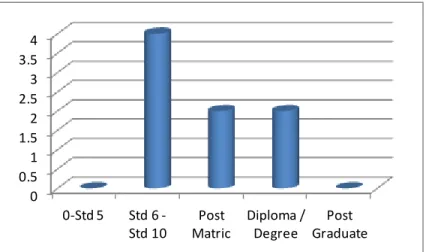
Projects Case Analaysis
- The Company/Trust
- Products
- The Market
Ogwini Community Trust Farmers will engage in farming with forestry, livestock (cattle and goats) and vegetables. Ogwini Community Trust farmers are the owners of the forest properties purchased from Mondi through land reform for the Ogwini community. The trust's farm will have sufficient capacity to produce quality vegetables for local and provincial markets.
The fund plans to use conventional tillage and more advanced plant technologies to grow tomatoes in the tunnels. Each group will present different business and social needs to be addressed by the fund or local municipality. The information gathered will help business plan developers understand the social and psychographic profile of the community.
The type of land must be consistent with the Action Plan for the purposes of the business plan. Outline a detailed action plan for the project to be implemented by the Trust and operational managers.
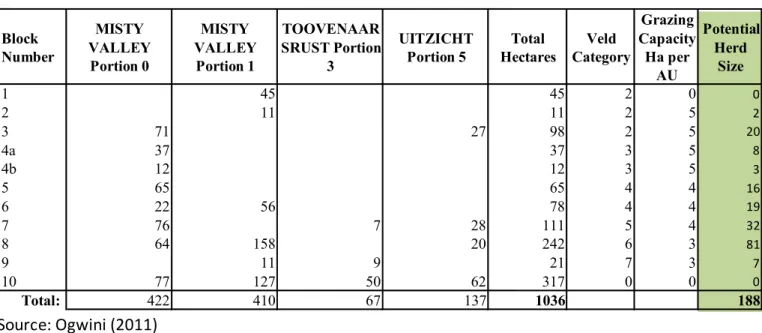
Market Analysis
The following section summarizes the main SWOT analysis of the projects visited during the research project. The business plan helps the trust raise the funding needed to establish and develop the business. The trust secures market contracts and agreements for business ventures. The service of a veterinarian must be guaranteed.
The principles of fire control must be observed. Vegetable spraying programs should be considered.
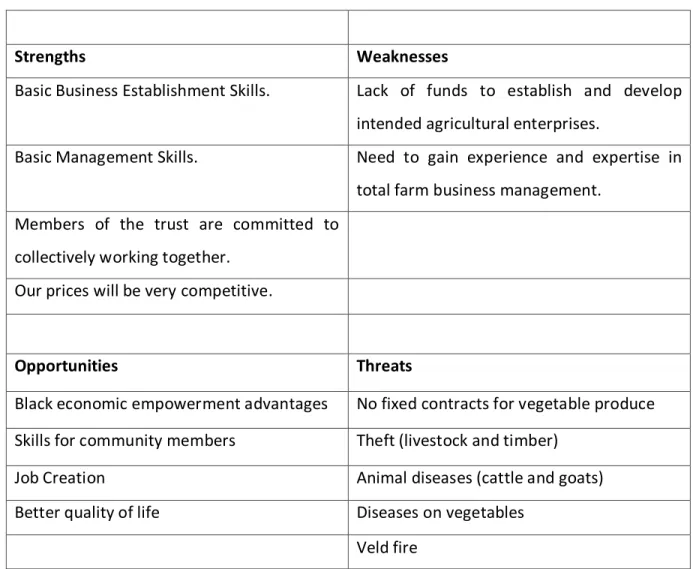
General Management Aspects
All the requirements of the law must be respected by the manager and the board of directors.
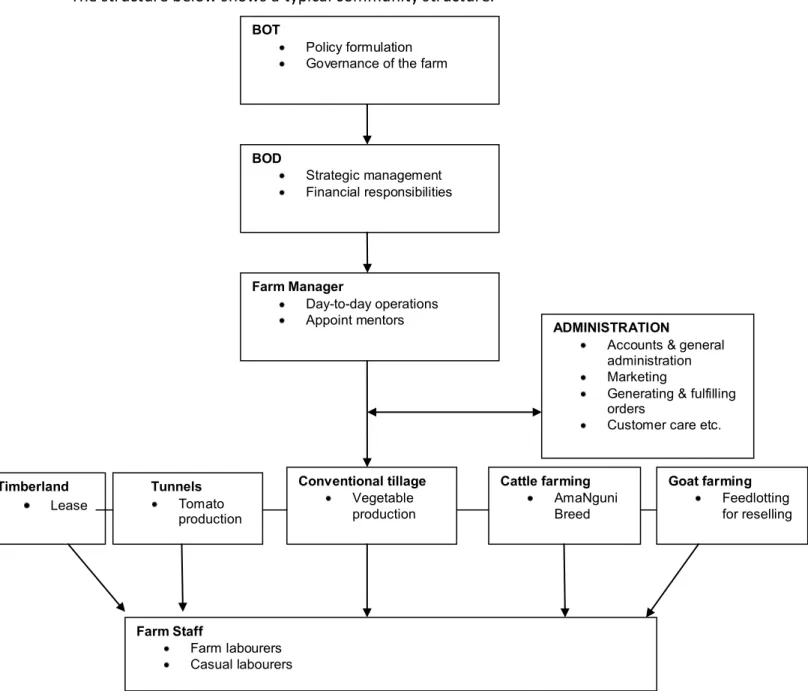
Training – Technical Knowledge
Milestones achieved
Business Dynamics
Conclusion
RESEARCH SUMMARY
Introduction
Summary
The industry organizes those land reform beneficiaries to consider joining to gain valuable information to benefit the projects and individuals involved. The summary profile of project operations managers was discussed, including but not limited to: age profile, experience and qualifications. The chapter closed with a complex system in which land reform projects must operate in this complex and changing environment.
The Ogwini Community Trust project was used as a case study to highlight key areas of focus to make the project sustainable and successful.
CONCLUSIONS AND RECOMMENDATIONS
Recommendations
Future Research
Conclusion
In any election within the meaning of paragraph (4), all members of the community aged 18 years or over shall have the right to vote. In making the rules referred to in paragraph (4), the Chief Land Claims Commissioner shall take into account the cultural values of the community. No one shall be eligible to be appointed President of the Court or Judge of the Court unless he or she is one.
The court's decisions are publicly registered on the same basis as decisions made by a high court. -General" means the Director General of Land Affairs;. registrar" means the registrar of the court. the Regional Land Claims Commissioner” means the Regional Land Claims Commissioner having jurisdiction in respect of the land to which an application under this Chapter relates.
